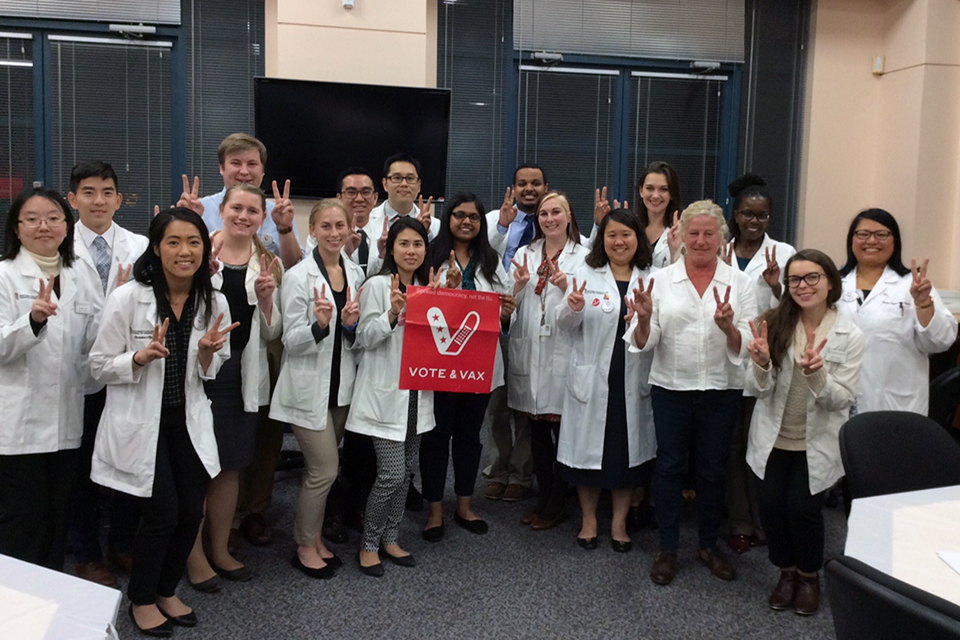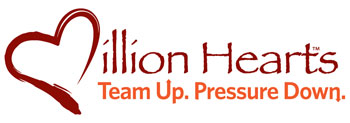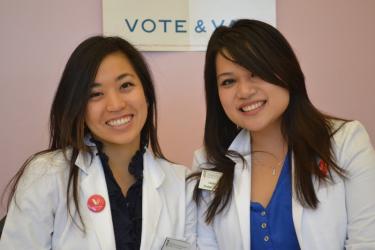SOP Students Help Transform Patients Into Doctors at UMCH Teddy Bear Clinic
Students volunteer at annual “clinic” designed to lift the spirits of pediatric patients receiving treatment at the University of Maryland Children’s Hospital.
By Malissa Carroll
March 22, 2013
Smiles and laughter filled the hallways of the University of Maryland Children’s Hospital (UMCH) as patients and their families arrived at the fourth annual Teddy Bear Clinic on March 14. Hosted by the UMCH Child Life Program and Maryland Regional Operations, a patient care project within the American Pharmacists Association Academy of Student Pharmacists (APhA-ASP) at the University of Maryland School of Pharmacy, the clinic offered a welcomed break from doctors’ appointments and exams for children in the hospital’s inpatient and outpatient clinics.
“The Teddy Bear Clinic is a great event for the children because it gives them a chance to be the doctor,” says Kendrix Nguyen, third-year student pharmacist and senior chair of Maryland Regional Operations at the School of Pharmacy. “It also helps the children understand why doctors and nurses check their vital signs every day and emphasizes the importance of the triage they go through each time they visit the hospital.”
This year marked the third year that students from the School of Pharmacy helped fundraise and volunteer at the clinic. Student pharmacists from Maryland Regional Operations; Operation Self-Care, another patient care project within APhA-ASP; and the Pediatric Pharmacy Advocacy Group solicited sponsorship from faculty, staff, and students at the School, as well as local organizations to raise the funds needed to purchase 60 asthma-friendly teddy bears for the children.
Seven-year-old Laura Snodgrass and five-year-old Hannah Hart were among the many children excited to take their turn playing doctor after finishing their appointments for the day. Arriving in white shirts and matching purple skirts and leggings, the girls quickly chose their teddy bears, selecting identical white bears from the display, before moving on to the different stations to perform thorough check-ups on their new cuddly friends.
Student pharmacists were on-hand to walk the children through each station in the clinic. Virginia Nguyen, second-year student pharmacist and co-chair of Maryland Regional Operations, helped Laura and Hannah design hospital bracelets for their teddy bears, as well as measure and weigh the bears during their stop at the vitals station.
“For children, there aren’t many positives about going to the hospital, but this gave them something to look forward to,” says Nguyen. “This was my first year participating in the Teddy Bear Clinic, and I loved seeing how excited the children were to receive the teddy bears. Watching the small things, like how their faces light up when they get to press the buttons on the different machines, was the best part.”
Other health care professionals, including pediatric nurses, child life specialists, child life assistants, chief residents, pediatric nutritionists, and physical and occupational therapy staff, helped the children as they made their way through the clinic’s check-up, surgical, physical and occupational therapy, and healthy eating stations. Hannah could not contain her smile as a volunteer slipped the stethoscope around her ears to let her listen to her teddy bear’s heartbeat, while Laura helped another volunteer perform a CT scan of her teddy bear in the hospital’s child-size CT scanner.
“Laura is scheduled to undergo a CT scan soon, so watching her help perform the procedure on her teddy bear was great,” says Esther Snodgrass, Laura’s mom and Hannah’s legal guardian. “I think having events like this available to the children is amazing, and as a parent, I really appreciate it. They introduce children to things they might experience during their time in the hospital, and once they know what those things are, the fear of the unknown goes away.”
“Children learn through play, so activities like the Teddy Bear Clinic offer them the perfect opportunity to better understand hospitalization and explore the medical atmosphere at their developmental level using a hands-on approach,” continues Molly Baron, CCLS, certified child life specialist at UMCH. “I think it is wonderful that the Children’s Hospital has staff members who are willing to take two hours out of their busy schedules to provide these types of learning opportunities regarding their areas of expertise.”
The final station in the clinic was also managed by student pharmacists. Here, students worked one-on-one with Laura and Hannah to show how children and adults should wash their hands. Laura and Hannah sang the ABCs twice with the students to demonstrate how long hand washing should last, and practiced correct hand washing technique by mimicking students’ gestures. Following the demonstration, the girls, along with the other children who participated in the clinic, were given a coloring book and crayons and allowed to take their teddy bears home.
The UMCH Child Life Program co-hosted the event with students from the School of Pharmacy. Its staff plays a crucial role in supporting children and their families by helping them cope with and adjust to the stressors of illness and hospitalization. Members of this team work closely with doctors, nurses, and other health care professionals to address the developmental and psychosocial needs of children and their families.
“Child Life helps all members of the medical team work together for the benefit of the patient and family,” says Renee Heatwole, CHSP, child life assistant at UMCH. “Through events like the Teddy Bear Clinic, we provide an opportunity for continued collaboration amongst the various members of the health care team and bring the health care experience down to the children’s level, allowing them to understand it in a way that is significant to them.”



